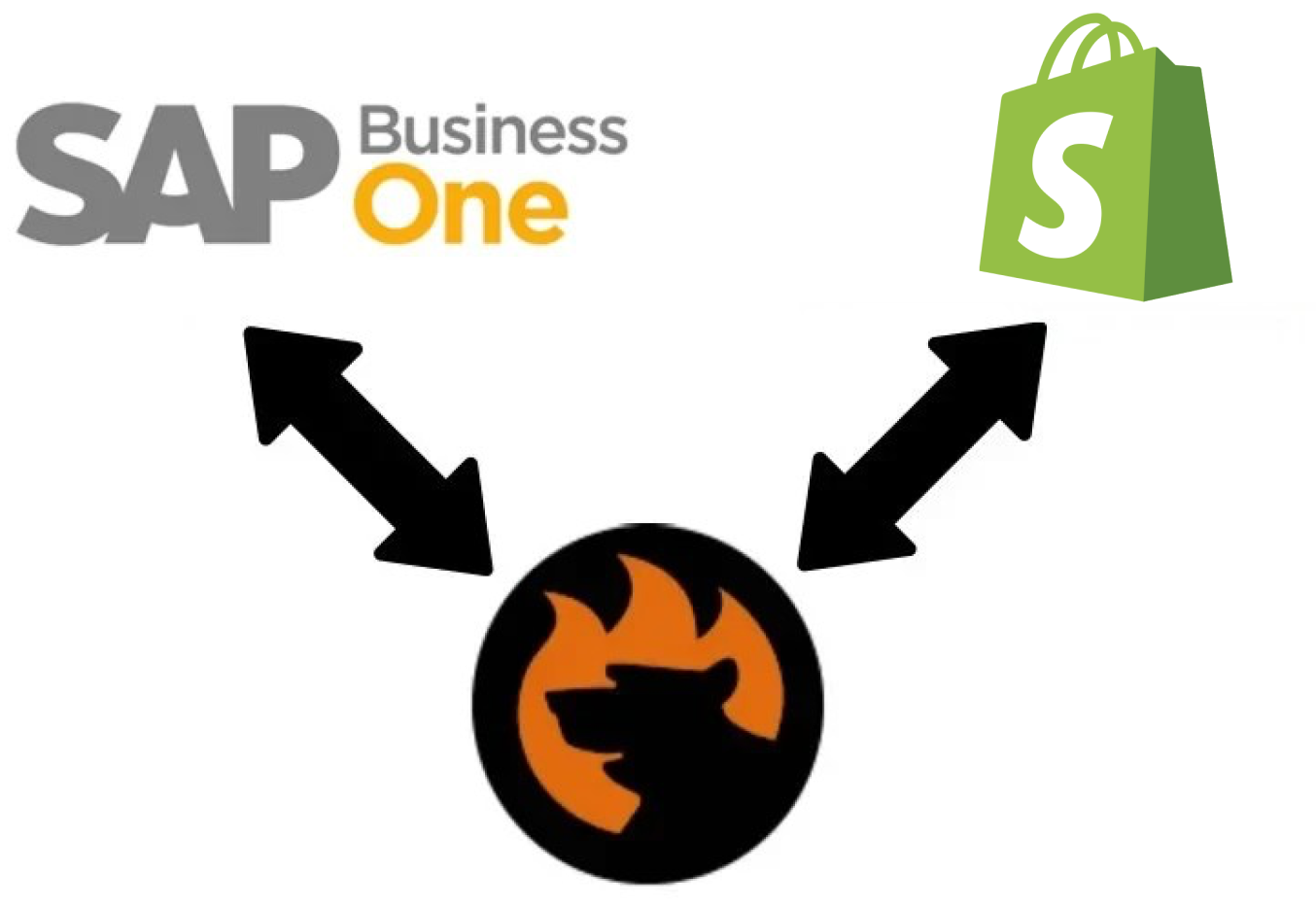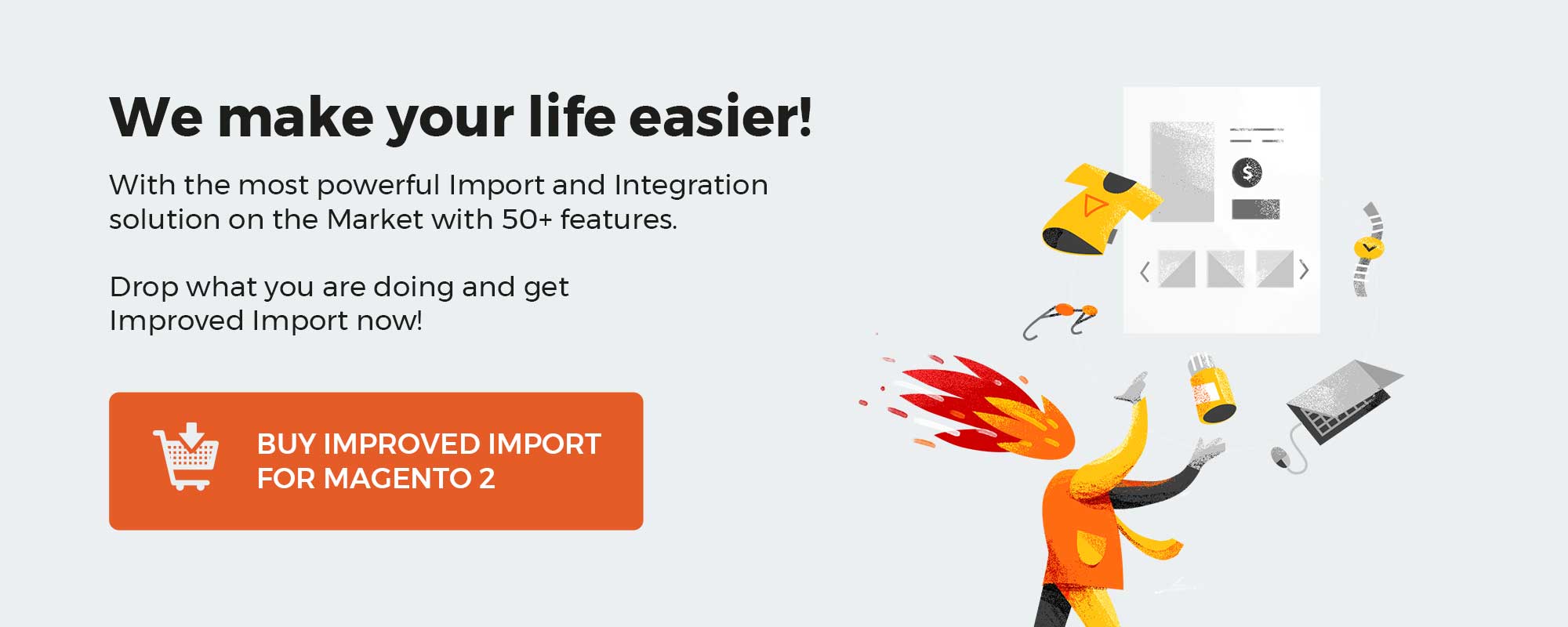
These days, there are many useful modules that simplify the work with eCommerce, such as ERP systems and accounting tools. One of the main tools for work is the integration of data from various platforms, such as SAP Business One. In the text below, we will look at one of these possible integrations – SAP Business One with the Shopify platform. With the SAP Business One Shopify integration, you can achieve your goals of connecting the information of these two platforms and improving the performance of your business. Also, with the Firebear team, you will be able to carry out this process quickly and painlessly. We will help you with this. Today we’re going to go over all the features of integration and why you need to pay attention to it.

To all this, you can integrate Sap Business One with lots of different systems and Firebear Studio will kindly help you do that. Сontact us at the link below for more information about integration:
Sap Business One Shopify Integration Free Quote
Integrating SAP Business One with Shopify gives you the opportunity to merge data from the two platforms and get better value for your business. This process helps you synchronize customers, shipments, and other information to create a seamless and convenient system for managing your business. You can store and synchronize information such as:
- Categories
- Items and products
- Customer addresses
- Inventory data
- Price lists
- Period discounts
- Business partners
- Sales orders
- Shipping information
Table of contents
SAP Business One Introduction
If you are not familiar with the SAP Business One platform, we will briefly describe it in this section. SAP B1 is a software solution for company management that aims to automate basic processes and improve resource planning. This solution was designed more for small and medium-sized companies, but it can also suit larger companies because of the large variety of functions. Together with automation, this platform brings simplification of daily responsibilities that are related to financial operations, human resources, and store management.
SAP Business One has 15 functional modules, which are the foundation for the platform:
- Administration. Main module where you can configure the main functions.
- CRM. SAP Business One gives you the opportunity to link common sales employee tasks with the other modules.
- Financials. This module helps you to set up and manage the Chart of Account definition as well as create core Journal Entries.
- Opportunities. SAP Business One gives you the ability to keep track of potential Sales and Purchases.
- Sales – A/R. Module where you can manage the sales flow of your store. It starts as Quotation and proceeds to Order, becoming Delivery and then AR Invoice.
- Purchasing – A/P. This module provides the ability to maintain the purchase flow from Quotation to Order, GRPO, and AP Invoice.
- Business Partners. SAP B1 can manage master data of Leads, Customers, and Suppliers here.
- Banking. A module that helps you create Incoming (sales) and Outgoing (purchase) payments.
- Inventory. SAP Business One manage your master data of supplies to be sold/purchased along with their quantity/value in warehouses.
- Resources. This module gives you an understanding of where master data of resources (machines and people) should be used in production (capacity and planning).
- Production. The module gives you the possibility to maintain Bill of Materials master data and create Production orders.
- Project Management. SAP B1 provides the ability to define projects with this module.
- Material Requirements Planning. This SAP B1 Module allows you to manage purchase order recommendations and gives you predictions related to needed items in sales/production.
- Service. The module that gives you the ability to make service calls.
- Human Resources. SAP Business One provides you with an option to manage employee master data.
[embedded content]
These modules enable you to cope with various business tasks. Together with all these modules, SAP Business One can be connected and integrated with various platforms such as Magento, Shopware and etc. You can also use these modules with integration. In this article, we look at SAP B1 and Shopify platform integration and its features. In the next section, we will briefly describe this platform and walk through its functionality.
In addition, you can find more information about SAP Business One in this article: SAP Business One In-Depth Review.
Shopify About and Features
Shopify is a Canadian multinational e-commerce company that specializes in the provision of services in the field of digital commerce. The platform provides a variety of features for starting and growing your business online. Payments, marketing, shipping, and customer engagement tools are the main tools that Shopify provides. In addition to these, the platform provides many various options that improve the quality of your journey on the eCommerce road.
As we mentioned above, Shopify has a variety of options for launching your store such as:
- Branding. Ability to select or create custom branding, your online store name, and logo.
- Online presence. Providing a choice of the domain name and stock photos for business.
- Store set up. Using the features of the platform you can choose the products to sell and the store theme.
Shopify platform also has a brilliant community with its interesting features. In addition to the blog, you have access to a variety of useful features such as:
- Business Courses
- Guides
- Free tools
- Podcasts
- Community events
The above features provide the platform with excellent functionality in the communication between customers and employees, which can not but improve their work. In addition, the platform has a Help Center which performs customer support functions.
Along with this, you have the ability to manage your payments, purchases, sales, and deliveries to accurately manage your store in the digital space. Shopify offers excellent opportunities for the further development and growth of the business, in addition to the startup. The platform has several basic principles of working:-
- Sell everywhere. Using one platform you get to sell to anyone, anywhere. With Point of Sale and online through your website, social media, and online marketplaces.
- Market your business. Ability to analyze, create and implement digital marketing campaigns using key features of the platform.
- Manage everything. Using Shopify you have the capability to control all processes from payments to shipments using a single dashboard.
These are the essentials for the first introduction and in understanding the Shopify platform. Now, we’ll return to the main subject of our article – Sap Business One Integration with Shopify and discuss its main features.
SAP Bussines One Shopify Integration
We want to remind that you can do SAP B1 Integration with Shopify Firebear Studio will kindly help you do that. Contact us following the link below for more information on this subject:
Sap Business One Shopify Integration Free Quote
Customer
With the Firebear team, you can integrate all existing web customer details between Shopify and SAP Business One. Also, all newly registered users’ account information will be connected to SAP B1.
Item
With our help, you can synchronize Items from SAP Business One to Shopify. You will be able to transfer item lists of your web store with all details. Even if you have different custom or complex types of products, you can discuss the details of this structure integration. You can also integrate and upload existing products to SAP Business One. All product updates or upgrades will be automatically integrated and synchronized with SAP B1 master data.
Order
With our help, you can synchronize all Shopify sales orders placed by the web customers with SAP Business One Sales data. The integration also enables you to calculate the total value mapping of tax and shipping charges during the migration to SAP Business sales orders. Along with this, you can the synchronization of discounts with saving and maintaining the same order value both in Shopify and ERP systems.
Stock
We can synchronize SAP B1 and Shopify platform inventories. Product stock will also be integrated and there will be three combinations to choose from:
- In Stock – Committed
- In Stock
- In Stock – Committed + Ordered
In addition, SAP Business One warehouses can be fully mapped to Shopify, taking into account all the inventory that is on the integrated warehouse.
Payment
You can integrate Payment Gateway and other payment information. On successful payment, the transaction ID will be displayed in Shopify and an invoice will be generated on the eCommerce store. You will be able to manage and see all information about invoices and payments that were made in your digital store.
Shipments
With our help, you can also synchronize all delivery information from SAP Business One to Shopify. You can put the shipment tracking number in SAP and it will be synchronized in Shopify. Also, this shipping number will be available in the storefront in the order details.
Conclusions
Thinking back on everything we discussed in today’s post, we can roughly divide integration into six points that correspond to the areas. You get the ability to integrate new and old users, as well as all the information about them. Effortless synchronization of inventory and order information. You can easily swap inventory data between these platforms without losing important information. Wonderful synchronization of shipments and payments, which allows you to transfer information about all the details of these processes between the platforms. Sap Business One Integration with Shopify is a comprehensive and valuable solution that will help you synchronize your business information between the two platforms.
Remember that you can integrate Sap Business One with lots of different platforms, not only Shopify, and Firebear Studio will kindly help you do that. Contact us using the link below to learn more about the process:
Sap Business One Shopify Integration Free Quote







